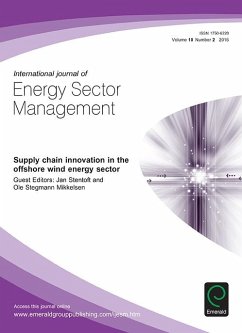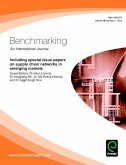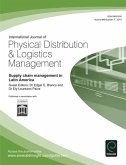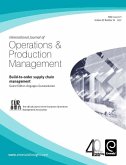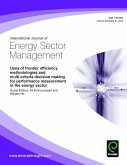Compared to other energy sources, wind power excels in producing energy with low emission of carbon dioxide (CO2). Wind power energy is thus considered a strong and viable alternative to conventional sources such as oil, coal or natural gas to produce electricity. Although more expensive, wind energy production in Europe has moved from onshore to offshore sites for several reasons: high energy potential associated with larger turbines; the vastness of offshore areas; stronger and more stable winds at sea. The offshore wind industry can be described as immature compared to other energy sectors that have had the chance to mature over several decades. Government subsidies had helped the offshore wind industry to develop initially, but these subsidies will soon expire. The industry's top priority is to reduce the cost of energy production in wind power systems. Costs can be reduced not only through the adoption of new technologies, but also through balanced redesigns of the supply chain. Reducing the costs of energy production will require a widened supply chain management (SCM) perspective. This e-book contains six chapters that address the different aspects of supply chain innovation (SCI) in the offshore wind energy sector. SCI is defined as a change (incremental or radical) within a supply chain network, supply chain technology, or supply chain process (or a combination of these) that occur in a company function, within a company, in an industry or in a supply chain in order to enhance new value creation for the stakeholder.The first chapter by Jan Stentoft and Ram Narasimhan introduces a conceptual framework that highlights the promise and potential of SCM to reduce the costs of energy production by the offshore wind energy sector. The framework's three interdependent aspects -innovation, industrialisation, and supplier partnering - can help guide the industry to identify the appropriate measures to reduce costs. The second chapter by Patrick Henley and Chee Yew Wong focuses on the formation of new interfirm relationships in the UK offshore wind sector. The ways by which the selective process is being managed, according to the authors, is as important as the levels of compatibility and complementarities. They found that new suppliers make significant investments in order to build customer trust and remove uncertainty. Written by Ivan Martinez-Neri, the third chapter is a literature review of supply chain integration. State-of-the art research is discussed in the various types of studied industries and manufacturing environments. Although supply chain integration has become an influential topic in the field of SCM, the extant literature on project-based manufacturing environments and renewable energy projects do not adequately include supply chain integration research. The fourth chapter by Kristian Petersen, Erik Skov Madsen and Arne Bilberg deals with how maintenance tasks can be planned and executed in a smarter way with a view to improving the modularisation of the operations and maintenance (O&M) of offshore wind power installations. Victoria Baago-Engels and Jan Stentoft wrote the fifth chapter which provides an overview of O&M issues in the offshore wind energy sector by using empirical data. They identify three main issues that lead to increasing costs in O&M: the proliferation of too many predefined rules that limits development; the lack of coordinated planning for the different services offered at the wind farms; and, the lack of a common approach on how O&M should be managed strategically.The sixth chapter is written by Kannan Govindan and Madan Shankar who investigate barriers to offshore wind energy from an Indian perspective. A framework and a five phase-methodology to explore barriers are developed, which then is evaluated using an analytical hierarchy process. The most essential barrier in offshore wind energy farms is found to be high capital cost.We hope that you enjoy reading the six chapters in this e-book.
Dieser Download kann aus rechtlichen Gründen nur mit Rechnungsadresse in A, B, BG, CY, CZ, D, DK, EW, E, FIN, F, GR, HR, H, IRL, I, LT, L, LR, M, NL, PL, P, R, S, SLO, SK ausgeliefert werden.

